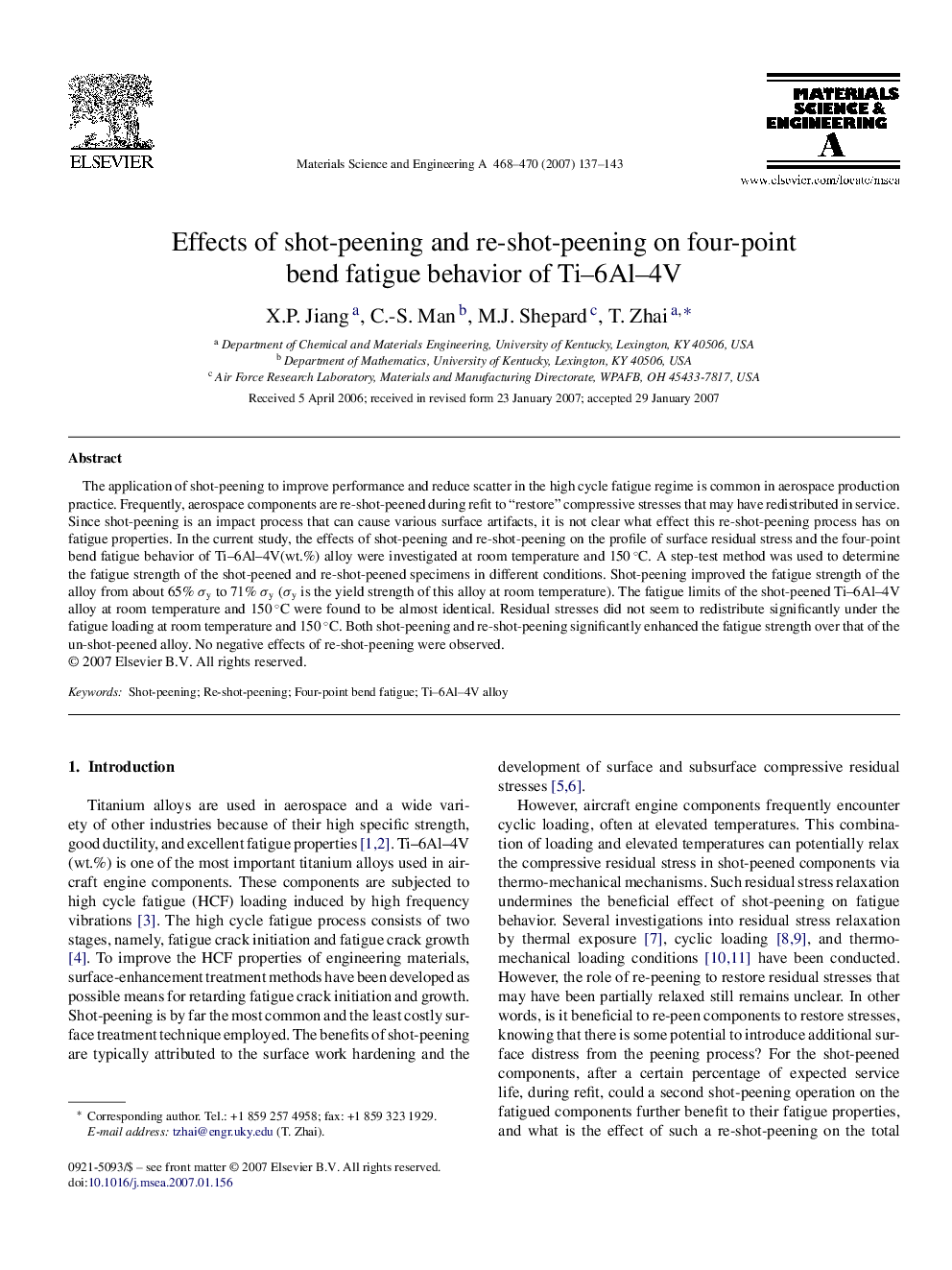| Article ID | Journal | Published Year | Pages | File Type |
|---|---|---|---|---|
| 1583331 | Materials Science and Engineering: A | 2007 | 7 Pages |
The application of shot-peening to improve performance and reduce scatter in the high cycle fatigue regime is common in aerospace production practice. Frequently, aerospace components are re-shot-peened during refit to “restore” compressive stresses that may have redistributed in service. Since shot-peening is an impact process that can cause various surface artifacts, it is not clear what effect this re-shot-peening process has on fatigue properties. In the current study, the effects of shot-peening and re-shot-peening on the profile of surface residual stress and the four-point bend fatigue behavior of Ti–6Al–4V(wt.%) alloy were investigated at room temperature and 150 °C. A step-test method was used to determine the fatigue strength of the shot-peened and re-shot-peened specimens in different conditions. Shot-peening improved the fatigue strength of the alloy from about 65% σy to 71% σy (σy is the yield strength of this alloy at room temperature). The fatigue limits of the shot-peened Ti–6Al–4V alloy at room temperature and 150 °C were found to be almost identical. Residual stresses did not seem to redistribute significantly under the fatigue loading at room temperature and 150 °C. Both shot-peening and re-shot-peening significantly enhanced the fatigue strength over that of the un-shot-peened alloy. No negative effects of re-shot-peening were observed.
